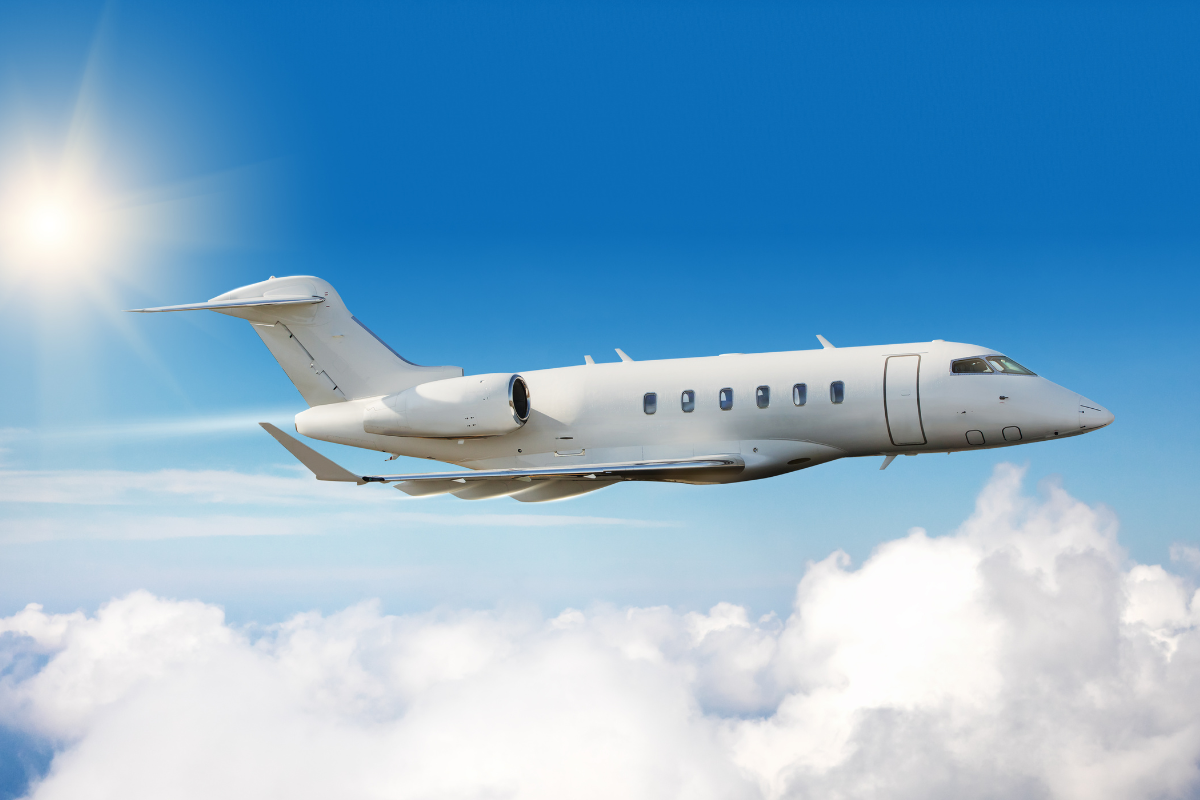Planes generally avoid flying over the Pacific Ocean for several reasons, primarily centered around safety, efficiency, and cost. The vastness of the Pacific Ocean means that there are few airstrips or airports on the small islands scattered throughout, making emergency landings extremely difficult.
This remoteness poses significant challenges for search and rescue operations in the event of a crash. Moreover, the Pacific is notorious for its turbulent weather conditions, which can make flights over this ocean particularly challenging for both commercial airliners and private jets.
Why Do Planes Avoid the Pacific Ocean?
Most airlines traveling between East Asia and the Americas prefer routes over land rather than over the expansive Pacific Ocean. The main factors influencing this decision are high operational costs and safety concerns. One of the primary reasons is the risk associated with flying through stormy weather, which is more common over the Pacific.
1. Efficient Routing
Curved air routes over land, rather than straight paths over water, are more cost-effective for airlines. For instance, flights from the United States to Japan often take a curving route across Canada and Alaska. This route not only reduces travel time but also enhances fuel efficiency. A glance at a globe instead of a flat map makes it easier to visualize these efficient curved paths.
These efficient routes also contribute to reduced air traffic congestion. By spreading flights across a wider area, air traffic controllers can maintain safer distances between aircraft. This approach not only enhances safety but also allows for more flexible scheduling, potentially increasing the number of flights that can operate between distant locations.
2. Reduced Expenses and Time
Airlines can reduce their expenses by avoiding the Pacific Ocean, which benefits customers through lower ticket prices and shorter flight times. Efficient routing helps airlines increase their profits by minimizing fuel consumption and optimizing flight paths.
Moreover, these cost savings enable airlines to invest in other areas of their service, such as improved in-flight amenities, newer aircraft, or expanded route networks. This ripple effect of efficient routing can lead to an overall enhancement of the air travel experience for passengers while also contributing to the airline industry’s sustainability efforts.
3. Security and Safety in Case of Emergency
Flying over the Pacific Ocean is not ideal for emergency landings. In the event of an emergency, the chances of survival and rescue are significantly lower in the vast ocean compared to solid ground. Therefore, airlines prefer routes that stay closer to land where emergency services are more accessible, enhancing aviation safety.
Additionally, overland routes provide more frequent communication opportunities with air traffic control centers. This constant communication is crucial for real-time weather updates, course adjustments, and immediate response to any onboard issues. The proximity to multiple airports along these routes also allows for quicker diversions, if necessary, further bolstering the safety protocol.
4. Changes in Weather
Flights aim to minimize the time spent over water because oceanic weather tends to be more unpredictable and stormy than on land. The Pacific Ocean is particularly known for frequent lightning strikes and turbulent weather, which can pose dangers to aircraft. Consequently, flights between the Americas and East Asia often route through Canada and Alaska, where weather conditions are more stable.
Furthermore, land-based weather stations provide more accurate and timely meteorological data compared to oceanic areas. This wealth of information allows pilots and airlines to make more informed decisions about routes and potential weather-related risks, contributing to smoother and safer flights.
5. Jet Streams
Jet streams and high-altitude air currents moving from west to east due to Earth’s rotation significantly impact flight routes. Planes flying with jet streams can save time and fuel, but those flying against them can experience severe turbulence. Many flights utilize the Polar Jet Stream, which travels over land, thus avoiding the Pacific.
Understanding and utilizing jet streams has become an essential skill in modern aviation. Airlines often employ meteorologists who specialize in jet stream forecasting to optimize routes. This expertise not only enhances flight efficiency but also contributes to passenger comfort by minimizing exposure to turbulence.
Types of Flights Across the Pacific Ocean
Anyone who has embarked on a journey to a Pacific destination understands that crossing this vast ocean often involves intricate flight paths rather than straightforward routes. Instead of flying directly over the Pacific Ocean, planes typically navigate over larger landmasses to optimize safety and efficiency. This is largely due to the strategic routing that considers factors such as fuel efficiency, weather conditions, and available emergency landing sites, ensuring a smoother and safer journey for passengers.
Transpacific Flights
A transpacific flight refers to air travel between Asia or Australia and the Americas. While transatlantic flights are more common, transpacific routes have been available for commercial use since the 1930s. The Boeing 747, known for its high passenger capacity and fuel efficiency, has long been a favorite for these extensive journeys. Modern advancements in aviation have now made it feasible to use twin-engine aircraft for these routes as well. Today, aircraft such as the Airbus A320, Boeing 737, and Boeing 787 frequently undertake these long-haul flights, connecting travelers to distant locations like Hawaii, New Zealand, and Australia.
These flights are crucial for maintaining global connectivity and facilitating international trade and tourism. Airlines often select routes that maximize efficiency while minimizing environmental impact, which is increasingly important in today’s aviation industry. The choice of aircraft and routing strategies is designed to optimize performance and passenger comfort, ensuring a seamless travel experience across one of the world’s largest oceans.
Traveling to Pacific Nations and Islands
When traveling to or from Pacific Rim nations and areas such as New Zealand, Fiji, the Solomon Islands, Tonga, and Vanuatu, there is no way to avoid the Pacific Ocean. These flights often involve complex routing to ensure optimal safety and efficiency. Direct routes over the ocean are typically avoided to mitigate risks associated with emergencies and challenging weather conditions. Moreover, the Pacific region’s unique geographical and meteorological conditions require precise navigation and advanced planning to ensure safe and timely arrivals.
These journeys also highlight the role of aviation in connecting remote and isolated regions with the rest of the world. They provide essential links for economic activities, cultural exchange, and emergency response, underscoring the importance of reliable and efficient air travel for the inhabitants of these island nations.
Duration of Pacific Crossings
The time required to fly across the Pacific Ocean can vary significantly based on several factors, including the type of aircraft, distance, weather conditions, and fuel efficiency. For instance, a nonstop flight from Los Angeles to Tokyo on a Boeing 747 generally takes around 11 to 12 hours. Pacific Pacific’s vastness and unpredictable weather patterns necessitate meticulous planning and efficient routing to ensure safety and timeliness. Additionally, advancements in aircraft technology and navigation systems continue to improve the efficiency and reliability of these long-haul flights, making them more accessible to travelers worldwide.
Technological innovations, such as enhanced fuel efficiency and improved aerodynamics, play a vital role in reducing flight times and environmental impact. Airlines are constantly evolving to meet the demands of modern travelers, ensuring that long-haul flights across the Pacific are as comfortable and efficient as possible. These developments not only benefit passengers but also contribute to the sustainability of the aviation industry.
Efficient Routing and Safety
Due to the immense size of the Pacific Ocean, crossing it directly demands substantial fuel consumption. Instead, aircraft often follow what are known as “curved paths,” which are more efficient and safer. This routing leverages Earth’s curvature, offering faster and more fuel-efficient travel than straight paths. These curved routes also provide more options for emergency landings, which is crucial for maintaining aviation safety. Moreover, these routes often take advantage of prevailing winds and jet streams, further enhancing fuel efficiency and reducing travel time.
Curved paths minimize the chances of encountering obstacles and turbulence, making them preferable for air travel. Additionally, in the event of an emergency, having alternative landing sites is essential for passenger safety. Direct routes over the Pacific would require extensive search and rescue operations in case of an incident, adding to the complexity and risk. The strategic planning involved in these routes underscores the importance of safety and efficiency in modern aviation, ensuring that passengers can travel with peace of mind.
While the Pacific Ocean presents numerous challenges for aviation, efficient routing, and modern aircraft technology have made these journeys feasible and safe. Whether you’re flying on a commercial airliner or a private jet, understanding the intricacies of transpacific travel can enhance your appreciation for the complexity and safety of modern air travel.

